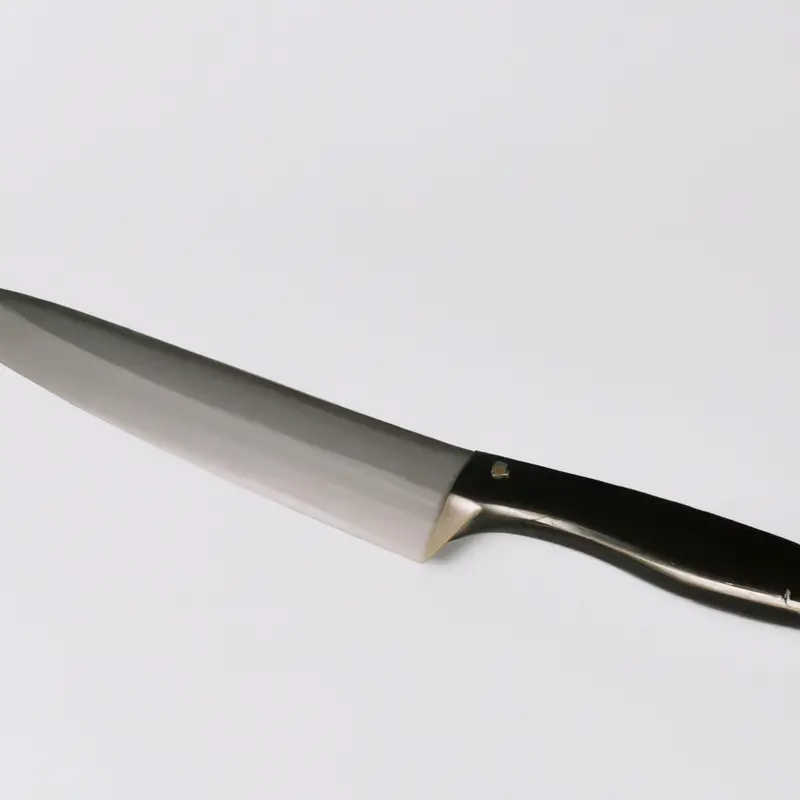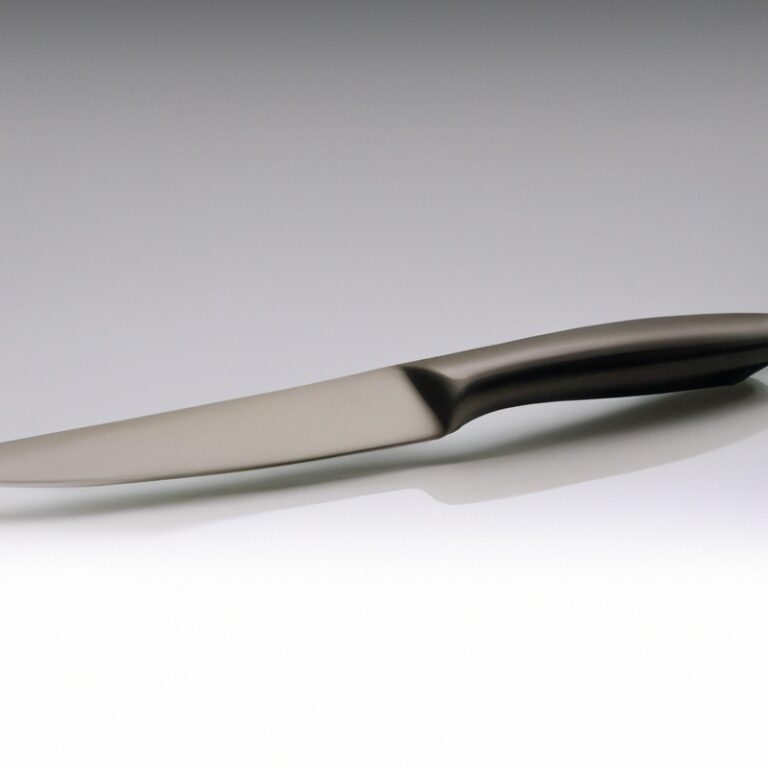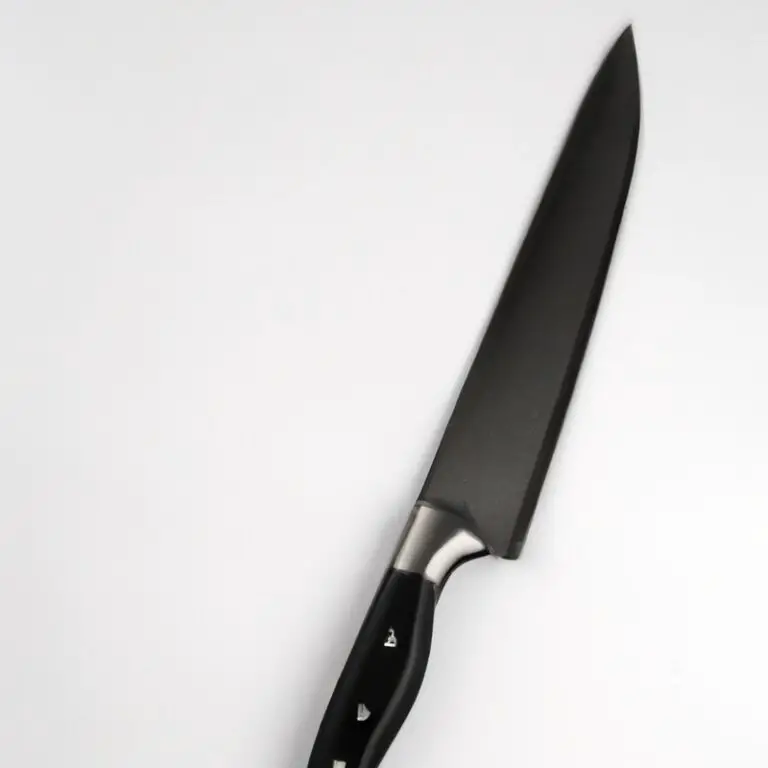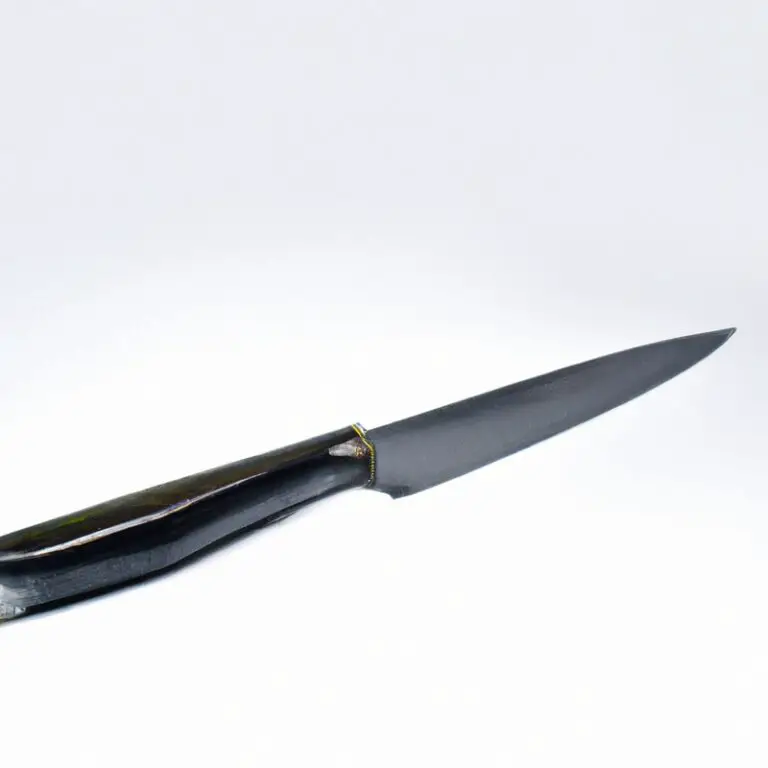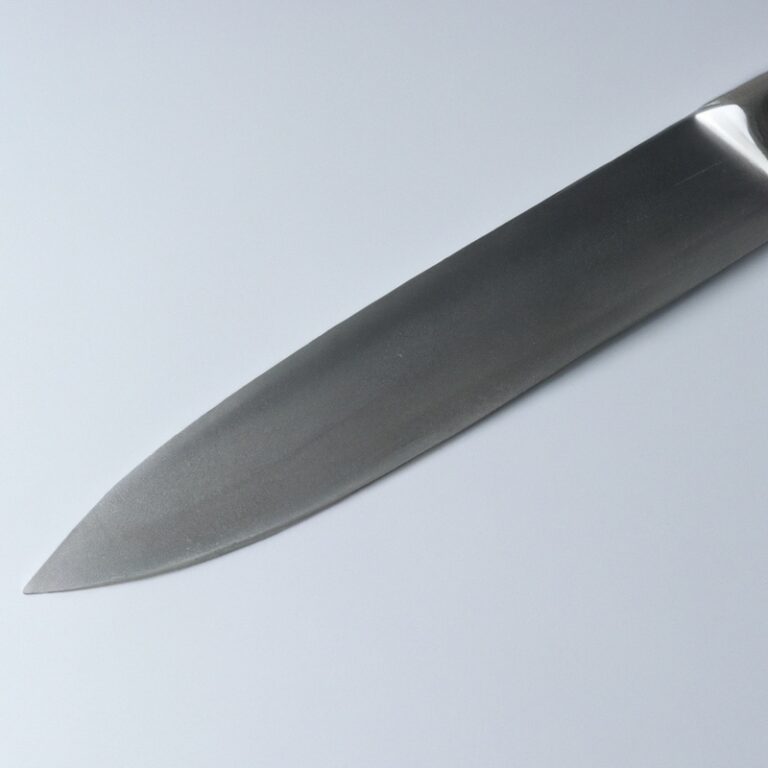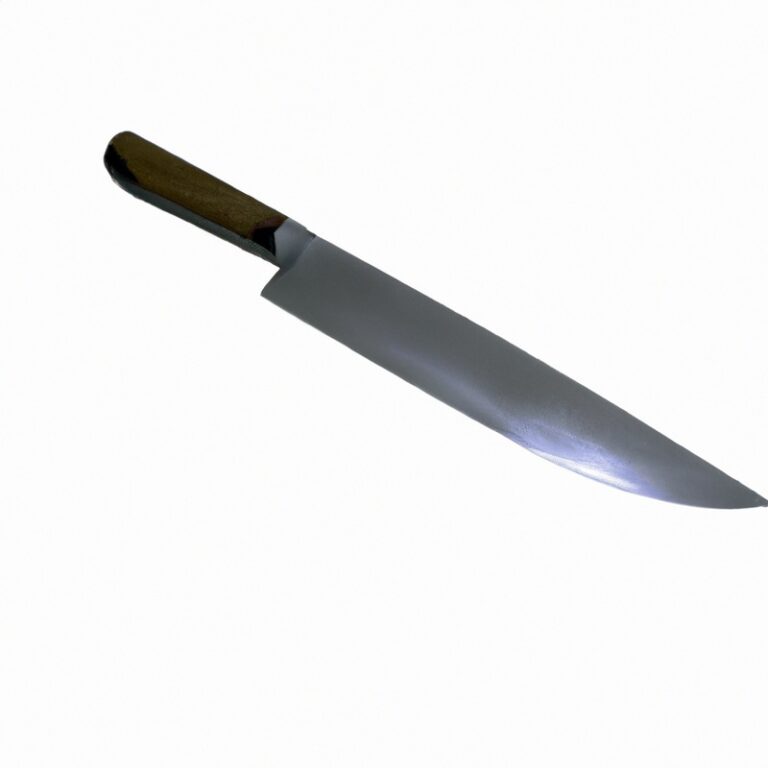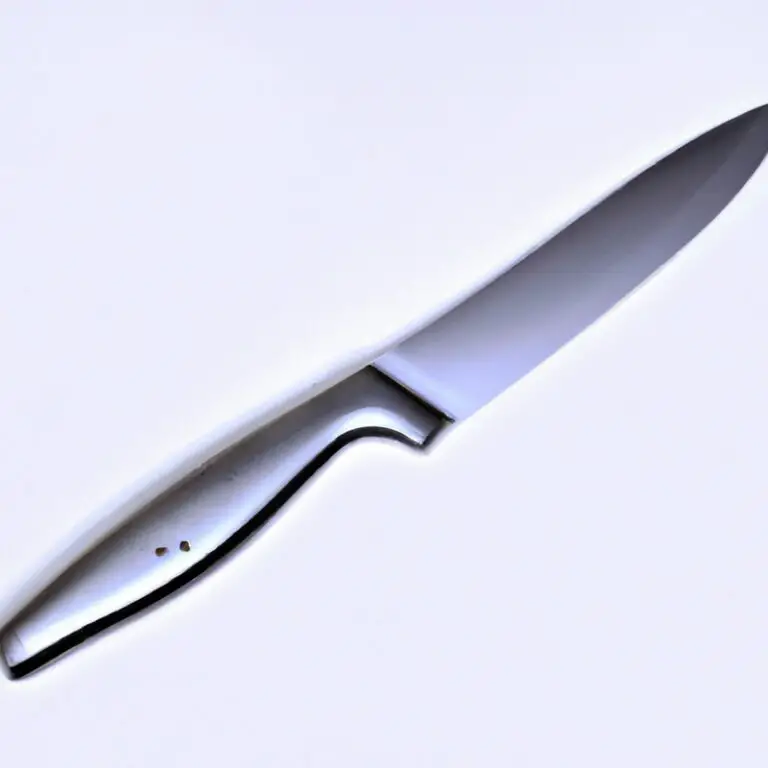What Is The Effect Of Sulfur In Knife Steel?
Key Takeaways:
- Sulfur in knife steel can improve its machinability and ease of processing.
- However, high sulfur content can negatively impact the steel’s toughness and resistance to corrosion.
- Balancing the sulfur content is crucial for achieving the desired properties in knife steel.
- Proper heat treatment can help mitigate the detrimental effects of sulfur on knife steel performance.
Have you ever wondered what makes a great knife?
Sure, the design, handle, and blade shape are important, but have you considered the role of steel in determining its performance?
Steel is the backbone of any knife, and different elements are added to enhance its properties.
One such element is sulfur.
But what does sulfur bring to the table?
In this article, I’ll dive into the intriguing world of sulfur-infused knife steel, exploring its impact on machinability, resistance against brittle fractures, and more.
So grab your favorite knife and let’s uncover the secrets behind sulfur’s effect on knife steel!
| Effect of Sulfur in Knife Steel | |
|---|---|
| Effect | Description |
| Increased Machinability | Sulfur increases the machinability of knife steel, making it easier to shape and form. |
| Reduced Toughness | High sulfur content can reduce the toughness and impact resistance of the steel, making it more prone to breakage. |
| Improved Free-Cutting Properties | Sulfur improves the free-cutting properties of knife steel, enabling it to be easily machined into desired shapes. |
| Inclusion Formation | Sulfur can form inclusions in the steel, affecting its overall quality and performance. |
| Reduced Corrosion Resistance | High sulfur content can lead to reduced corrosion resistance, making the steel more susceptible to rust and corrosion. |
| Enhanced Hardenability | In some cases, small amounts of sulfur can enhance the hardenability of knife steel. |
Understanding Knife Steel
What Makes up Knife Steel?
Knife steel is typically made up of iron and carbon.
These two elements form the foundation of the steel, giving it strength and durability.
Other elements, such as chromium, molybdenum, and vanadium, are often added to enhance the steel’s corrosion resistance, toughness, and ability to hold a sharp edge.
The specific composition of knife steel can vary depending on the desired characteristics and intended use of the knife.
Different types of knife steel exist, each with its own unique combination of elements to optimize performance.
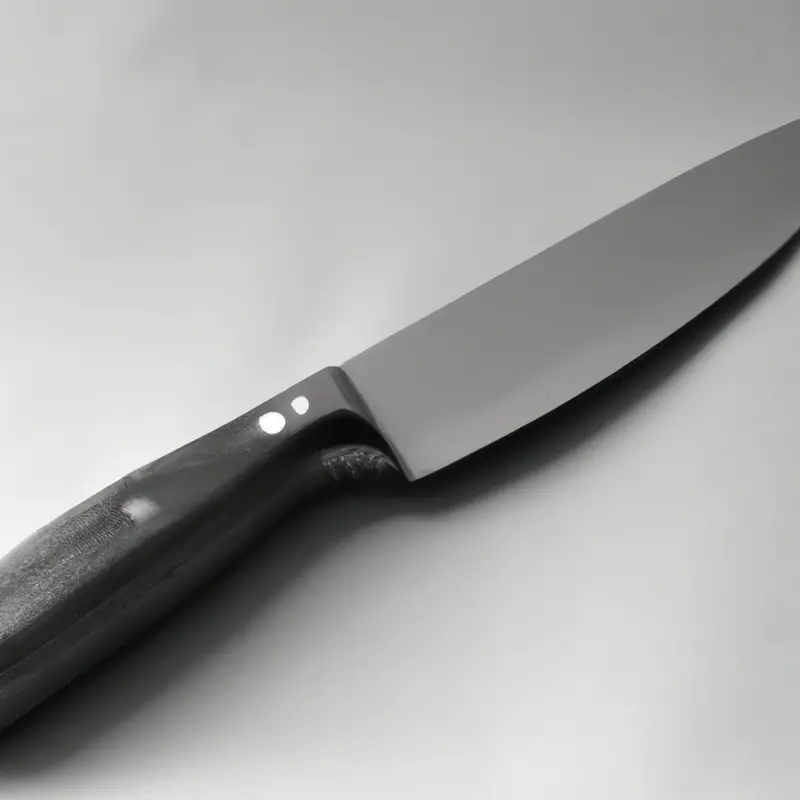
Why is Steel Alloyed with Other Elements?
Steel is alloyed with other elements to enhance its properties and improve its performance in various applications.
By adding specific elements, such as chromium, nickel, or vanadium, steel can become more resistant to corrosion, increase its strength, hardness, and toughness, and improve its ability to retain a sharp edge.
Alloying also allows manufacturers to tailor the steel’s characteristics for specific purposes, such as creating stainless steel for cutlery or high-speed steel for cutting tools.
Additionally, alloying can help control the steel’s microstructure and improve its response to heat treatment, further enhancing its overall performance.
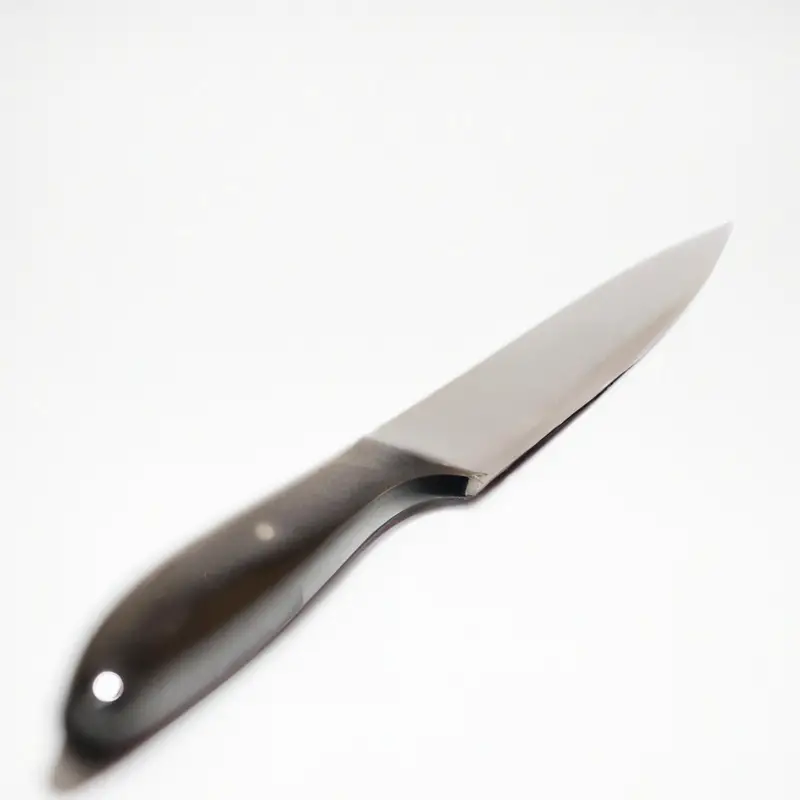
Different Types of Steel Used in Knives
There are several different types of steel that are commonly used in knives.
Each type has its own unique properties and characteristics that make it suitable for different applications.
Here are a few examples:
- Stainless Steel: This type of steel is resistant to corrosion and rust, making it ideal for kitchen knives and outdoor tools that might be exposed to moisture.
- Carbon Steel: Carbon steel blades are known for their exceptional sharpness and edge retention. They require regular maintenance to prevent rust, but many professionals prefer them for their superior cutting performance.
- Tool Steel: Tool steel is highly durable and resistant to wear and tear. It is often used in heavy-duty knives and tools that need to withstand tough conditions.
- Damascus Steel: This type of steel is renowned for its striking appearance, characterized by its unique pattern. It is a combination of different steel types, resulting in a blade with excellent strength and sharpness.
Ultimately, the choice of steel for a knife depends on the intended use and personal preference.
It is important to consider factors such as corrosion resistance, sharpness, durability, and ease of maintenance when selecting the right steel for your knife.
The Role of Sulfur in Knife Steel
Sulfur as a Constituent of Knife Steel
Sulfur is an important constituent of knife steel. It helps improve the machinability of the steel, making it easier to shape and work with.
Sulfur also plays a role in enhancing the steel’s resistance against brittle fractures, contributing to its overall durability.
However, high sulfur content can lead to negative effects on the steel’s toughness and corrosion resistance. It is important to find a balance in sulfur content to ensure optimal performance in knife steel.
The Effect of Sulfur on Steel’s Machinability
Sulfur plays a significant role in the machinability of steel.
When added in small amounts, sulfur acts as a free-machining agent, making steel easier to cut, shape, and drill.
It forms sulfuric compounds with inclusions in the steel, which break up during machining, creating smaller chips and reducing friction.
This improves tool life and productivity.
However, too much sulfur can lead to decreased toughness and ductility, affecting the overall performance of the steel.
Therefore, finding the right balance is crucial to optimize machinability without compromising other important properties of the steel.
Sulfur’s Contribution to Steel’s Resistance against Brittle Fracture
Sulfur plays a significant role in steel’s resistance against brittle fracture. When present in small amounts, sulfur helps improve the machinability of the steel, making it easier to work with.
It also acts as a grain refiner, promoting a finer and more uniform grain structure that enhances the steel’s toughness and resistance to fracture.
However, it’s important to note that excessive sulfur content can have detrimental effects on the steel’s properties, such as reducing its ductility and impact toughness. Finding the right balance of sulfur content is crucial for achieving optimal performance in knife steel.
Pros and Cons of Sulfur in Knife Steel
Advantages of Including Sulfur in Knife Steel
Including sulfur in knife steel offers several advantages.
- Enhanced machinability: Sulfur acts as a lubricant during machining, making it easier to shape and form the steel.
- Improved cutting performance: Sulfur helps to reduce friction between the knife blade and the material being cut, resulting in smoother and more efficient cutting.
- Increased resistance to brittle fracture: The presence of sulfur can improve the steel’s toughness and resistance to cracking, enhancing the overall durability of the knife.
Disadvantages of High Sulfur Content in Knife Steel
High sulfur content in knife steel can lead to several disadvantages. Firstly, it can negatively impact the steel’s toughness, making it more prone to cracking or breaking under stress.
Secondly, sulfur can reduce the steel’s corrosion resistance, making it more susceptible to rust and other forms of corrosion.
Additionally, high sulfur content can affect the steel’s ability to hold a sharp edge, leading to decreased cutting performance. It is important to consider these drawbacks when choosing a knife with sulfur-infused steel.
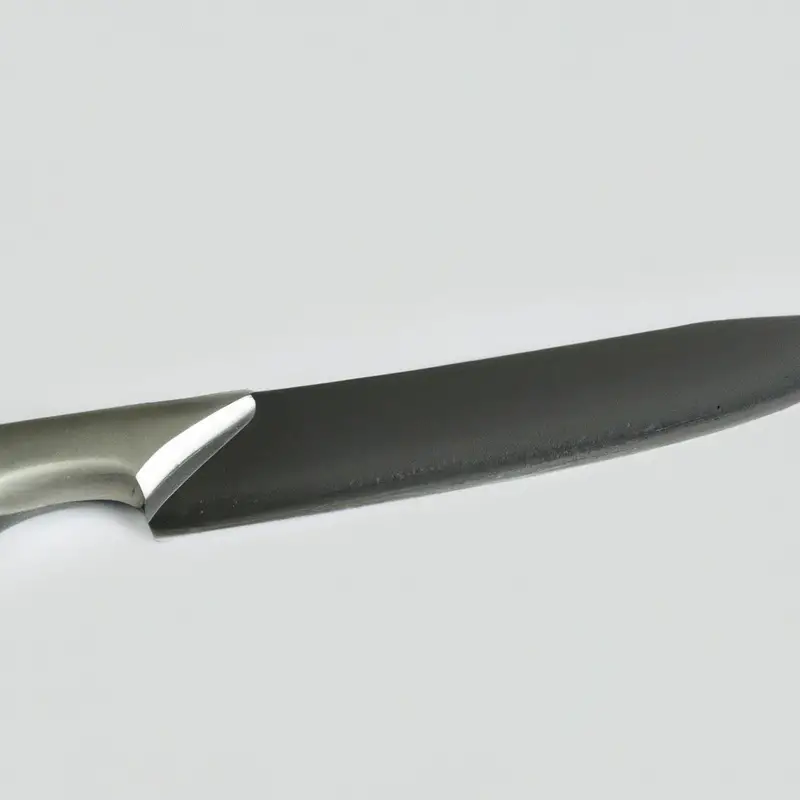
Balancing Sulfur Content for Optimal Performance
Balancing the sulfur content in knife steel is essential for achieving optimal performance. Too much sulfur can lead to decreased toughness and increased brittleness, while too little sulfur can result in poor machinability.
Finding the right balance allows for improved machinability and resistance against brittle fractures, all while maintaining the desired level of toughness.
Achieving this balance requires careful consideration of the specific steel composition and the intended use of the knife. The goal is to strike a balance that maximizes the performance and durability of the knife without compromising its overall strength and functionality.
Other Factors Influencing Knife Steel Performance
Carbon Content and Its Impact on Knife Steel
The carbon content in knife steel has a significant impact on its performance. Higher carbon content generally results in harder and more wear-resistant steel, making it ideal for tasks that require edge retention.
However, high carbon steel can be more prone to corrosion and may be more difficult to sharpen.
On the other hand, lower carbon content makes the steel easier to sharpen and less prone to corrosion, but it may sacrifice some edge retention. Finding the right balance of carbon content is crucial for achieving optimal performance in a knife.
Effect of Other Alloying Elements in Knife Steel
Other alloying elements in knife steel can have a significant impact on its performance. For example, adding elements like chromium can enhance the steel’s corrosion resistance and hardness.
Molybdenum improves the steel’s strength and resistance to wear.
Vanadium increases the steel’s toughness and sharpness retention. Nickel helps to improve the steel’s toughness and resistance to cracking.
These alloying elements work together to create a steel that is well-suited for specific applications and desired characteristics.
Choosing the right combination of alloying elements is crucial in creating a high-performing knife steel.
Heat Treatment’s Influence on Knife Steel’s Properties
The heat treatment process plays a significant role in determining the properties of knife steel.
By subjecting the steel to specific heating and cooling cycles, its hardness, toughness, and resistance to wear can be optimized.
During heat treatment, the steel’s microstructure is carefully modified, resulting in improved performance characteristics such as edge retention, strength, and corrosion resistance.
The specific heat treatment method used depends on the type of steel and the desired performance requirements of the knife.
Proper heat treatment is crucial for maximizing the potential of knife steel and ensuring the blade performs optimally in various cutting tasks.
Choosing the Right Knife with Sulfur-Infused Steel
Understanding Your Needs and Priorities
Understanding your needs and priorities is essential when choosing a knife with sulfur-infused steel. Consider the type of knife and how you plan to use it.
Are you looking for a versatile all-purpose knife or a specialized one?
Think about the tasks you’ll be performing and the level of durability and sharpness required. Additionally, evaluate the steel composition and performance, considering factors like the steel’s hardness, corrosion resistance, and edge retention.
By determining your needs and priorities, you can select the right knife that satisfies your specific requirements.
Considering the Type of Knife and Its Intended Use
When choosing a knife with sulfur-infused steel, it’s important to consider the type of knife you need and its intended use.
Different knives excel in specific tasks, so think about what you’ll be using the knife for most frequently.
Are you looking for a versatile all-purpose knife or a specialized tool for specific tasks like slicing, chopping, or filleting?
Consider factors like blade shape, size, and thickness to ensure the knife will meet your needs.
Additionally, think about the environment where the knife will be used: kitchen, outdoor, or professional setting.
By considering these factors, you can find a knife that will perform optimally for your intended use.
Evaluating the Steel Composition and Performance
Evaluating the steel composition and performance of a knife is essential in determining its quality and suitability for your needs.
When assessing the steel composition, consider factors such as the type and amount of alloying elements present, including carbon, chromium, and vanadium.
Additionally, evaluate the steel’s hardness, which affects its sharpness retention, as well as its toughness, which impacts its resistance to chipping and breaking.
Performance-wise, pay attention to factors like corrosion resistance, edge retention, ease of sharpening, and overall durability.
Ultimately, the steel’s composition and performance should align with your specific requirements and preferences.
Maintaining Knives Made with Sulfur-Infused Steel
Proper Cleaning and Storage Practices
To properly clean and store knives made with sulfur-infused steel, here are a few key practices to consider:
- After each use, wash the knife with warm, soapy water and a non-abrasive sponge or cloth.
- Avoid using abrasive cleaners or steel wool, as they can scratch the blade’s surface.
- Dry the knife thoroughly to prevent moisture buildup and potential rusting.
- Store the knife in a knife block, sheath, or on a magnetic strip to protect the blade from damage.
- Keep the knife in a cool, dry place to prevent corrosion and maintain its sharpness.
Sharpening Techniques and Considerations
When it comes to sharpening knives made with sulfur-infused steel, there are a few techniques and considerations to keep in mind. Here are some tips:
- Use the right sharpening tools: Invest in high-quality sharpening stones or systems that are specifically designed for knife sharpening. Avoid using generic sharpeners or machines that may damage the blade.
- Find the correct angle: Different knives require different sharpening angles. Consult the manufacturer’s guidelines or research the optimal angle for your specific knife. Use a sharpening guide or gauge to help maintain consistent angles.
- Start with coarse grit: If your knife is dull or has nicks, begin with a coarse grit stone to remove the imperfections. Gradually work your way to finer grit stones for a polished edge.
- Maintain a steady hand: Keep the blade at a consistent angle and apply even pressure while sharpening. Avoid applying excessive force, as it could weaken the blade.
- Test the sharpness: After sharpening, test the blade’s sharpness by gently running it across a piece of paper or hair. If it cuts effortlessly, your knife is ready to use.
Remember, proper sharpening techniques and regular maintenance will ensure your sulfur-infused steel knife stays sharp and ready for use.
Preventing Corrosion and Rust on Knife Blades
To prevent corrosion and rust on knife blades, there are a few simple steps you can take. First, make sure to clean and dry your knife thoroughly after each use.
Avoid leaving it wet or in a damp environment, as moisture can lead to rust formation.
Additionally, applying a thin coat of food-safe oil or lubricant to the blade can help create a protective barrier against moisture and corrosion. Lastly, store your knife in a dry and properly ventilated area, away from moisture and humidity.
Following these steps will help keep your knife blades in optimal condition and extend their lifespan.
Final Verdict
Understanding the effect of sulfur in knife steel is crucial for making informed choices when it comes to purchasing and maintaining knives. Sulfur, as a constituent of knife steel, greatly influences its machinability and resistance against brittle fracture.
While there are advantages to including sulfur in knife steel, such as improved machinability, high sulfur content can have negative implications, including reduced toughness and corrosion resistance.
Therefore, finding the right balance of sulfur content is essential for optimal knife performance. Additionally, other factors such as carbon content, other alloying elements, and heat treatment also play significant roles in knife steel’s properties.
By considering your needs, the type of knife, and evaluating the steel composition, you can make a well-informed choice when selecting a knife made with sulfur-infused steel.
Lastly, proper maintenance practices, including cleaning, storage, sharpening, and rust prevention, will help prolong the lifespan and performance of knives made with sulfur-infused steel. Remember, making educated decisions and taking care of your knives will ensure they serve you well in the long run.

